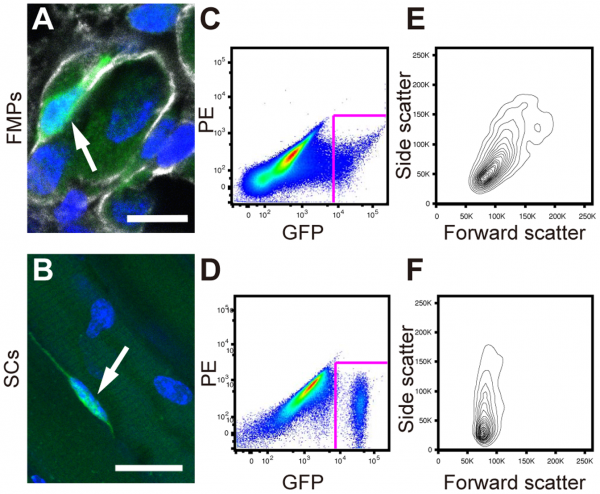User:Z3418779: Difference between revisions
| Line 45: | Line 45: | ||
[[File:Fetal_Skeletal_Muscle_Progenitors.png|600px|]] [[http://www.plosone.org/article/info%3Adoi%2F10.1371%2Fjournal.pone.0063016]] | [[File:Fetal_Skeletal_Muscle_Progenitors.png|600px|]] | ||
[[http://www.plosone.org/article/info%3Adoi%2F10.1371%2Fjournal.pone.0063016]] | |||
Sakai H, Sato T, Sakurai H, Yamamoto T, Hanaoka K, et al. (2013) Fetal Skeletal Muscle Progenitors Have Regenerative Capacity after Intramuscular Engraftment in Dystrophin Deficient Mice. PLoS ONE 8(5): e63016. doi:10.1371/journal.pone.0063016 | Sakai H, Sato T, Sakurai H, Yamamoto T, Hanaoka K, et al. (2013) Fetal Skeletal Muscle Progenitors Have Regenerative Capacity after Intramuscular Engraftment in Dystrophin Deficient Mice. PLoS ONE 8(5): e63016. doi:10.1371/journal.pone.0063016 | ||
Revision as of 09:27, 20 August 2014
Lab attendance
Lab Task 1; Research Paper Summaries
Li M, Zhao H-C, Li R, Yu Y, Qiao J (2014) Chromosomal Aberrations in In-Vitro Matured Oocytes Influence Implantation and Ongoing Pregnancy Rates in a Mouse Model Undergoing Intracytoplasmic Sperm Injection. PLoS ONE 9(7): e103347. doi:10.1371/journal.pone.0103347
In-vitro fertilisation (IVF) and In-vitro maturation (IVM) are potential ways to alleviate issues with gonadotrophin stimulation. IVF has been accepted as the prefered Assisted Reproductive technique because of the higher success rate then IVM, which has 7 to 12% probablitly of plantation. Previous studies have concluded that the low success rate is related to the etiology of infertility rather then the technique itself. The selection of specific oocytes based on morphological features can greatly increase chance of implantation.
The study goal is to analyse spindle and chromosome and spindle configurations during the maturation process and resulting pre- and post-implantation embryos.
Experiment 1: used immature oocytes collected and matured in-vitro, with 3 cultures one at 18, 20 and 22 hours. alpha-tubulin and chromosome configurations were imaged by immunofluorescnce method. Experiment 2: used intracytoplasmic sperm injection to fertilise IVM oocytes, the pre-implanation phase was then compared to that of fertilised IVo oocytes. Expierement 3: Resulting embryos where introduced to a Pseudo-pregnant mouse, followed by dissection of fetuses on days 6.5 and 12.5.
Results; Spindle assembly in expiement 1 showed 18h had less that 50% originally, then rose to 52% in metaphase,the 20 and 22 hour grounds have significantly higher abnormalities (p<0.05) though had lower then a fresh control group. In expierment 2 1072 immature oocytes were collected and cultured with 924 becoming mature at MII stage, with 18h and 20h groups having reduced gene expression compared to 22h and control. Experiment 3 no significant difference in embryos on day 6.5, with 18h having slightly lower fetal rate then other groups. Day 12.5 showed a significantly reduced implantation rate in 18h group in comparison to control and 22 h groups. Full term development results average number of pups 18h=3, 20h=4.5, 22h =4.4, IVO=5.88
Shows greater chance of chromosome abnormalities in embryos from IVM timing and the relationship with post-implantation development in mouse models.
Shi W, Xu B, Wu L-M, Jin R-T, Luan H-B, et al. (2014) Oocytes with a Dark Zona Pellucida Demonstrate Lower Fertilization, Implantation and Clinical Pregnancy Rates in IVF/ICSI Cycles. PLoS ONE 9(2): e89409. doi:10.1371/journal.pone.0089409
Previous studies have shown abnormal morphology of oocytes and embryos results in lower viability for pre-implantation embryos and increase early pregnancy loss. This study focused on one specific oocyte abnormality a Dark Zona Pellucida (DZP)which previous studies have concluded to not significantly impact fertilization, embryo quality and pregnancy rate. Unlike previous studies DZP embryos would be seperated from NZP (Normal Zona Pellucida)
Patient population consisted of 268 infertile couples aged less than 38 years, being treated with IVRF or ICSI64 patients were put on embryo transfer cycles with occyte surronded by DZP being further subdivide based on percentage of Dark Zona pellucida; Group A(47) had 58% of Zona Pellucida dark on average and Group B(22) had entierly Dark Zona Pellucida. The remaining 204 patients made up the control group with NZP.
All patients were stimulated using a long pituitary down -regulation protocol. Oocytes were cultured in fertilisation medium. Sperm was used according to density gradient. Fertilized oocytes were placed in cleavage medium. Twenty mature oocytes (10 NZP, 10 DZP) were examined using JEOL-1230 Transmission Electron Microscope.
Reuslts; Miscarriages and live births for the three groups had no large differences. Though there were marked differences in fertilisation rate, frequency of high quality embryos, implantation rates and clinical pregnancy rates. All being lower Group B compared to control. Comparing the microscopic morphology shows no change in thickness of Zona Pellucida. NZP showed typical typical mitochondria shape; oval to spherical in shape with dense matrix and few cristae. DZP Mitochondria displayed swollen mitochondria encircling or containing vacuoles.
Study concluded that higher DZp results in decreased fertilisation rate, low rate of high quality embryos, adverse pregnancy outcomes and increased abnormal mitochondria and cytoplasmic vacuoles.
Lab Task 2; Image upload
 [[1]]
[[1]]
Sakai H, Sato T, Sakurai H, Yamamoto T, Hanaoka K, et al. (2013) Fetal Skeletal Muscle Progenitors Have Regenerative Capacity after Intramuscular Engraftment in Dystrophin Deficient Mice. PLoS ONE 8(5): e63016. doi:10.1371/journal.pone.0063016